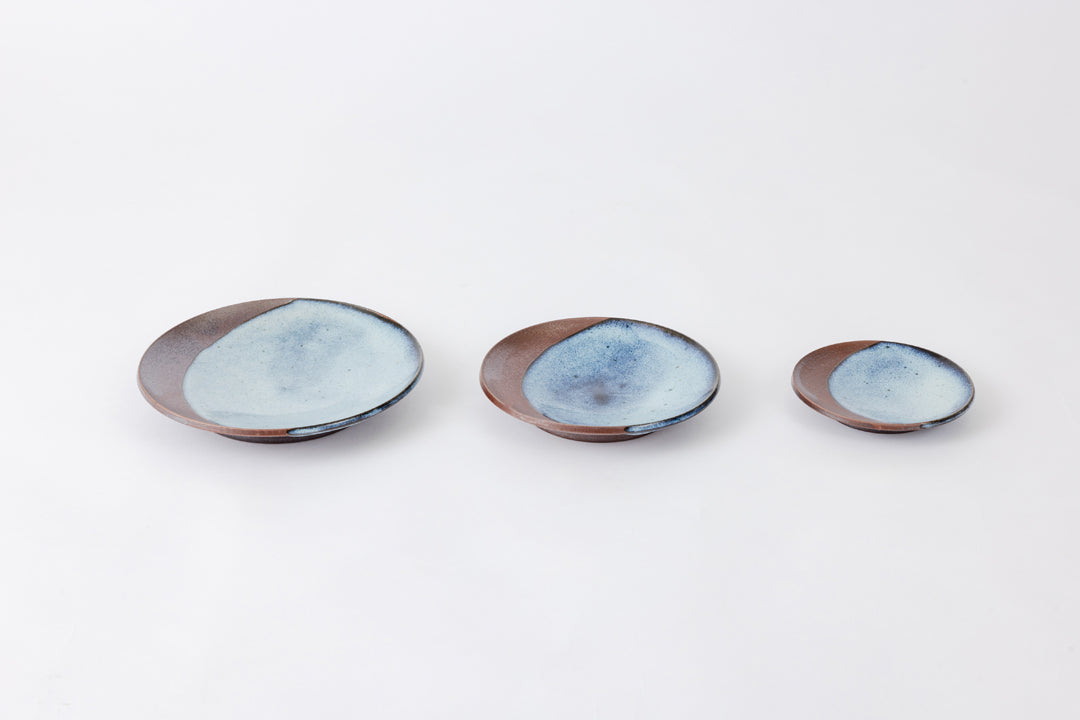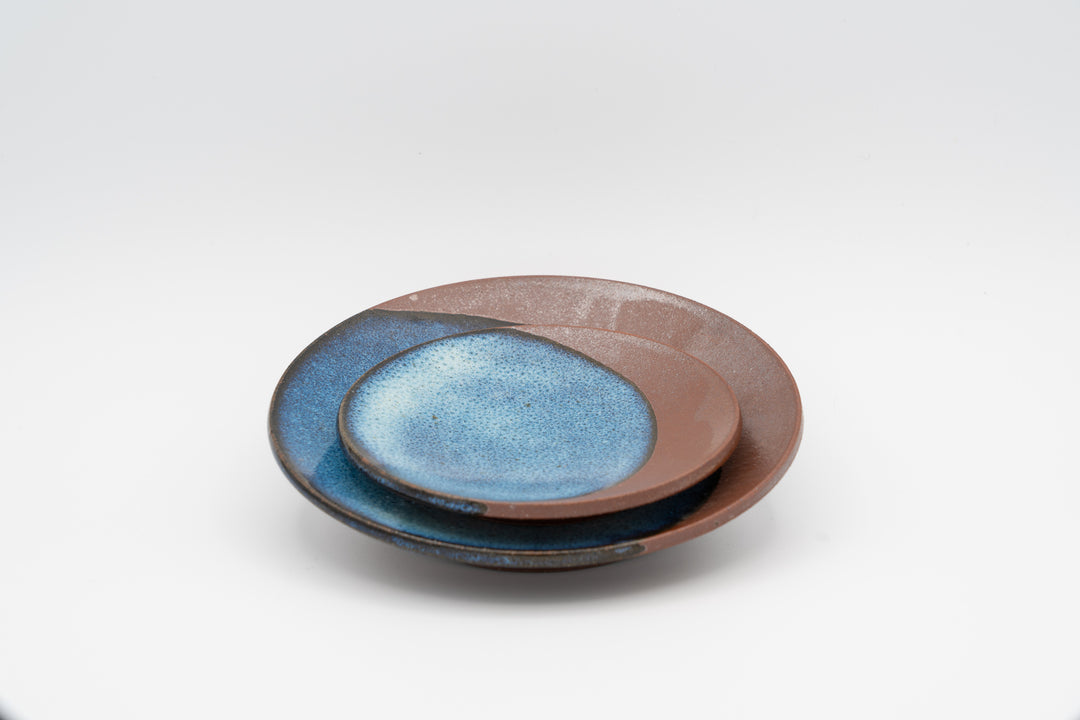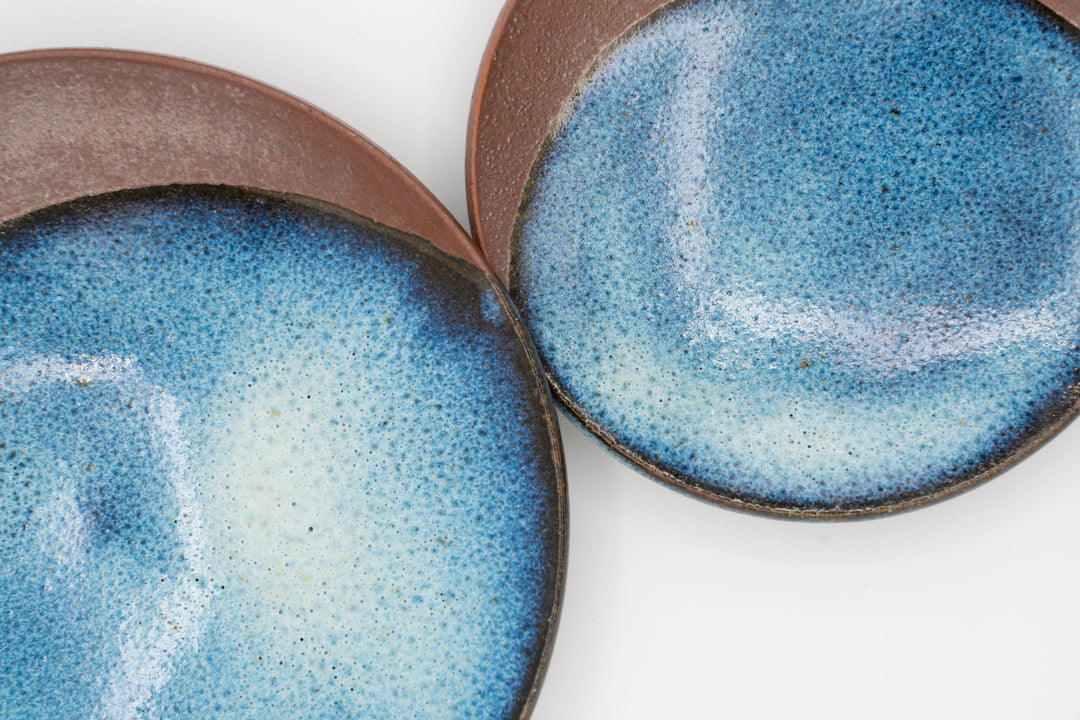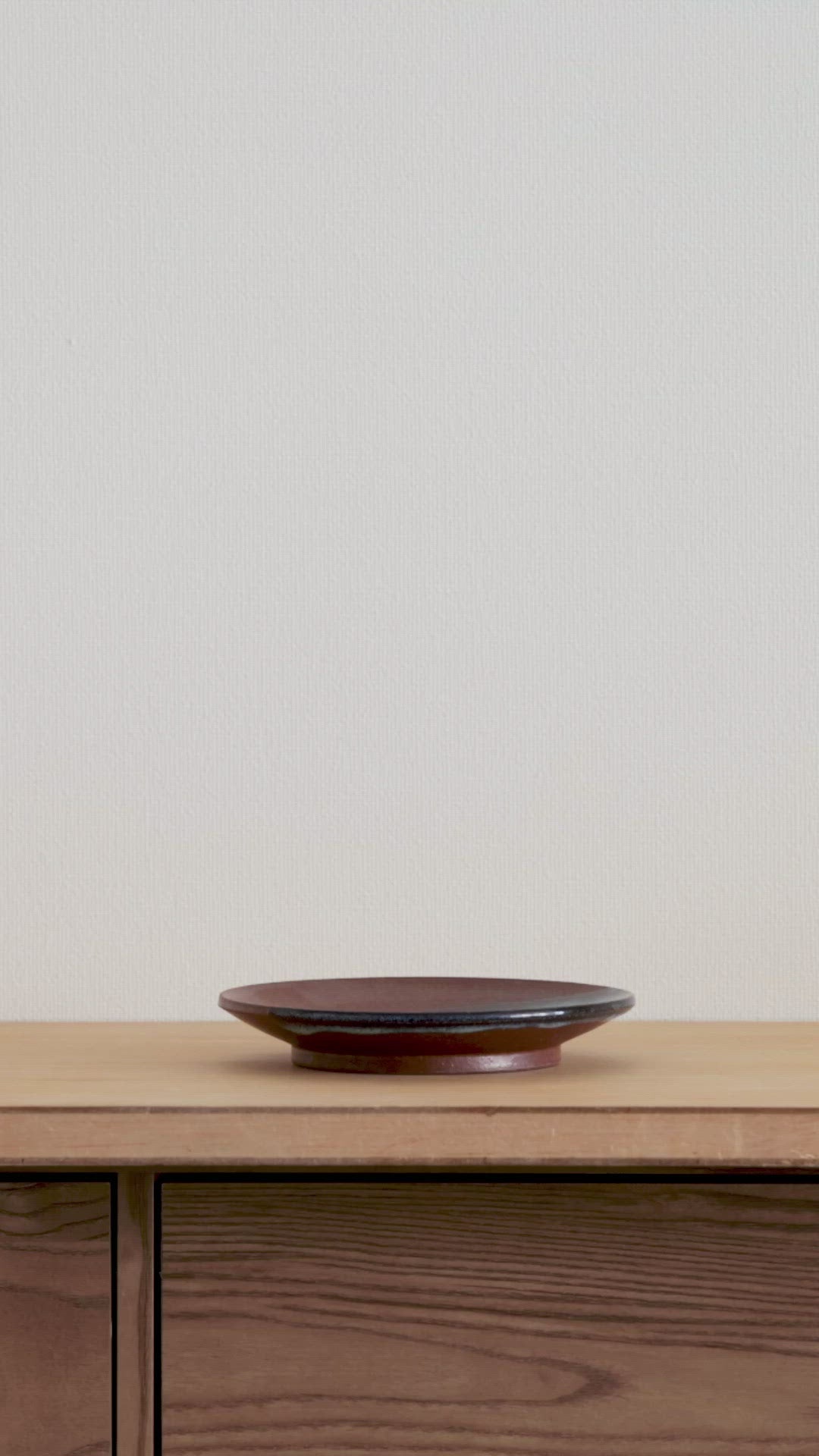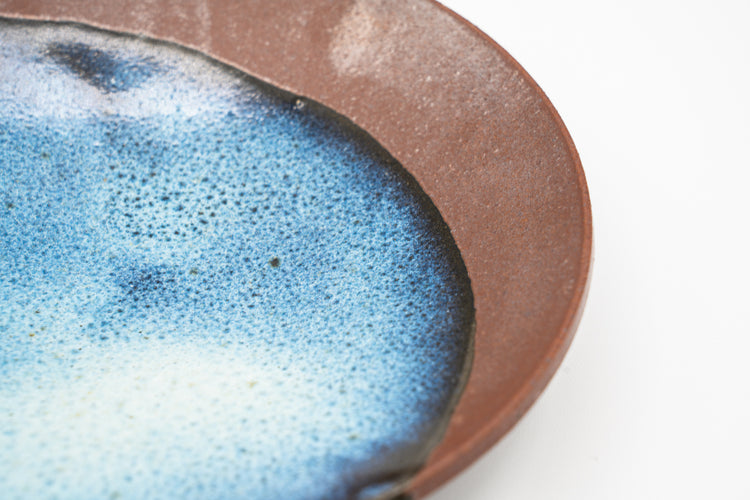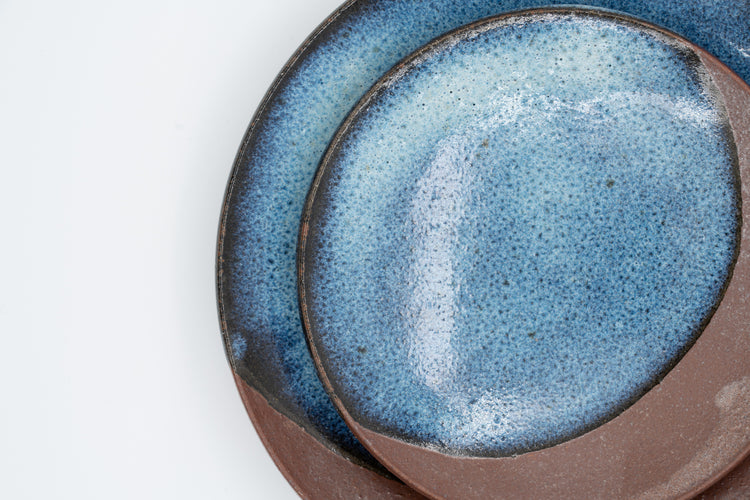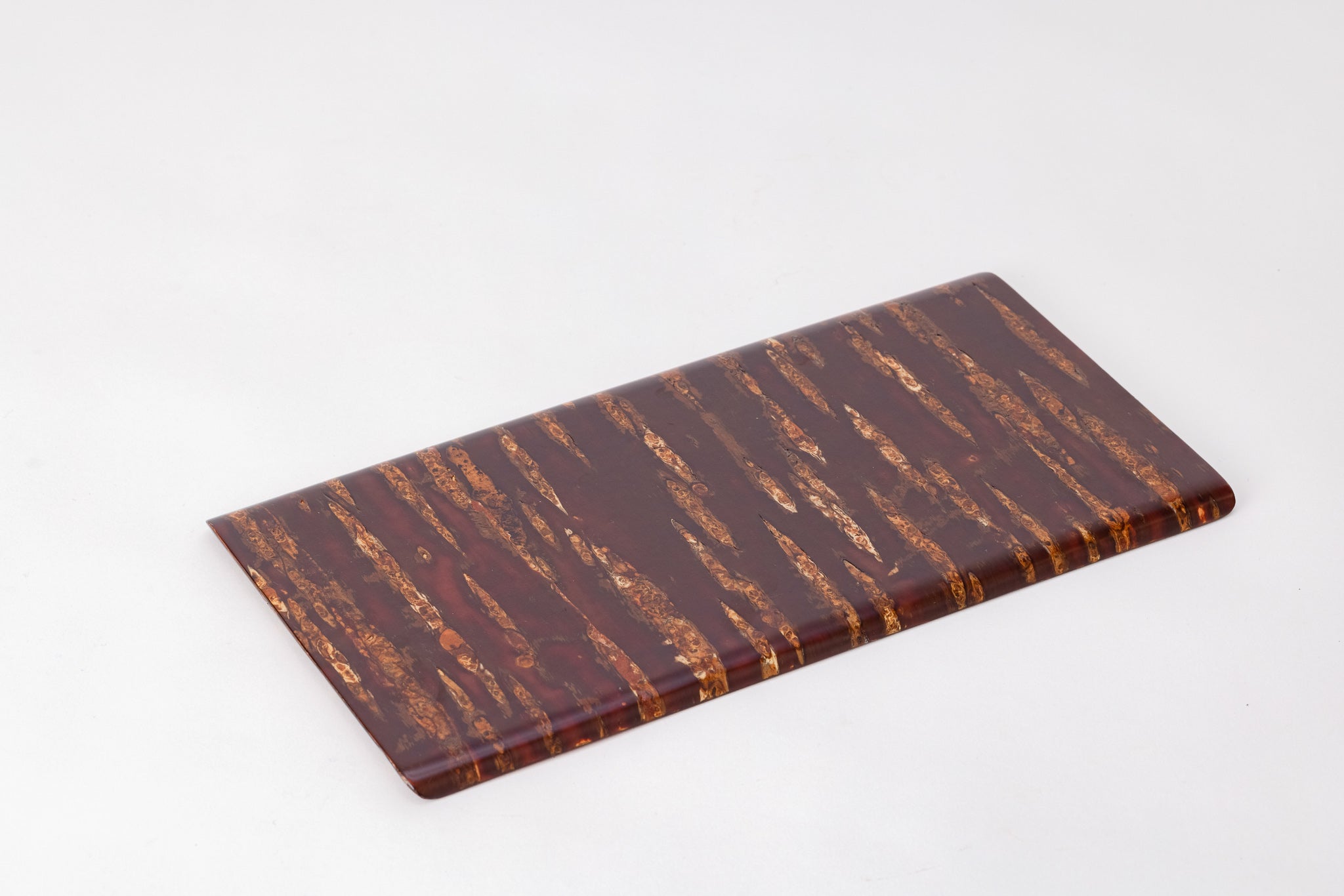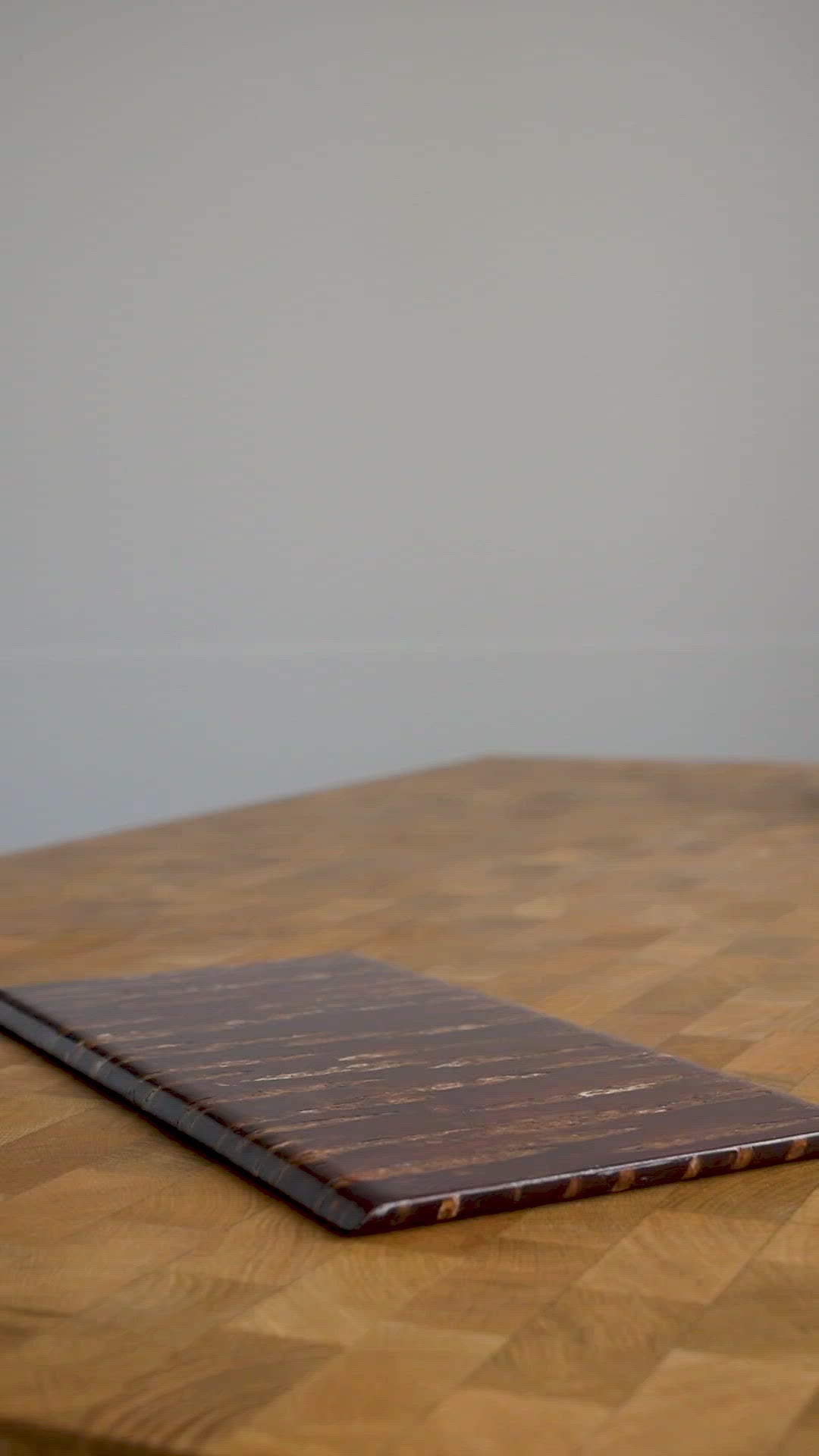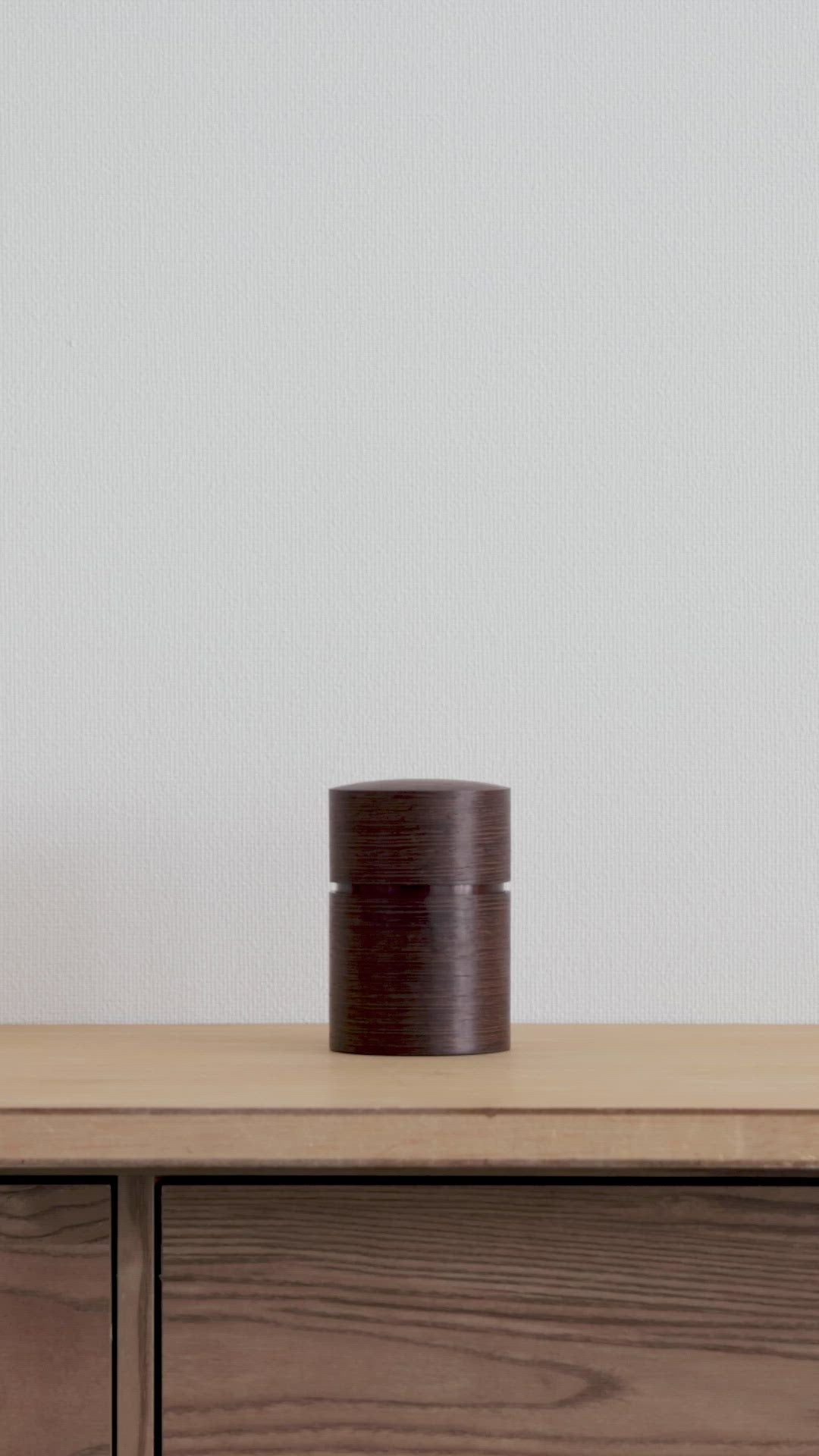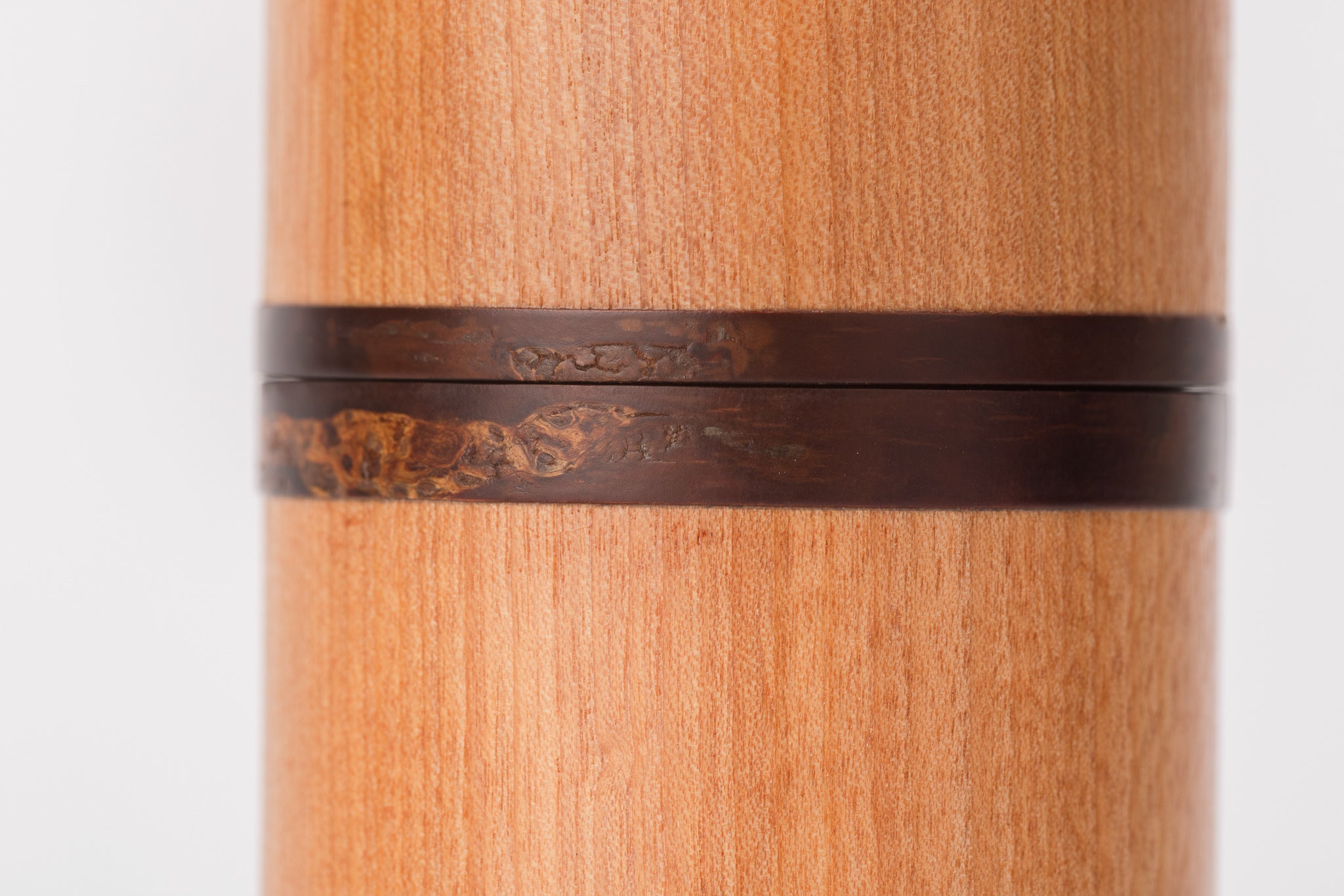Shiraiwayaki Waheegama
This craft was brought to life during the Edo Period when Unshichi Matsumoto, famous for his Oborisoma ware, was invited to Akita as an expert in the transformation of mined materials. Upon discovering the unique and high-quality soil in Shiraiwa, he launched the first Shiraiwayaki kiln, which went on to become a flourishing industry with as many as 5000 potters in its heyday.
However, the craft completely disappeared due to the Akita Semboku Earthquake of 1914, and other various events of the Meiji Period. It remained extinct for 70 years, until Aoi Watanabe's mother, a descendent of Shiraiwayaki potters, revived it as a young university graduate in 1975, an undertaking which was almost unheard of for a female potter at that time. Today there is only one kiln in operation: the Waheegama kiln, run by the Watanabe family.


Namako Glaze
A traditional glaze with a speckled texture similar to a sea cucumber.
Aoi Watanabe
Although she voluntarily took over the Waheegama kiln, in the beginning, Aoi Watanabe was not the biggest admirer of the Namako Glaze, preferring more muted designs instead. Her biggest concern was how to make this glaze, which had exclusively been used for folkloric pieces, work in today’s society. As an admirer of Scandinavian designs, she was inspired to express the warmth of the Namako Glaze through more modern designs. Not only does the Shiraiwa craft continue to live on through her contemporary pieces, Aoi's personality also shines through, as she incorporates the gold plating and rokurome techniques she picked up in Kyoto.






